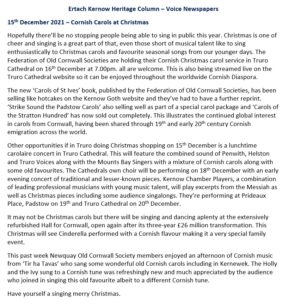Ertach Kernow - Mousehole an early history
Mousehole, was once described by Welsh poet Dylan Thomas as the ‘loveliest village….’ and is where he and his wife Caitlin celebrated their Penzance marriage at the Lobster Pot Hotel in 1937. Perhaps what Mousehole is famous for during December are its Christmas lights and a good reason for Cornish people to visit this historic village. At the time of writing the plans are for lighting up are that the lights will be on each evening between 5.00pm and 11.00pm from Saturday 11th December 2021 until Sunday 2nd January 2022.
Of course, Mousehole is far more than just lights, the cat and Star Gazy Pie, it has a long and rich history stretching back to the 13th century. This is so much so that whole books have been dedicated to Mousehole and the surrounding settlements. Cornwall was a source of wealth from fishing as well as tin and Mousehole itself was a major centre for fishing at this time. Probably as part of the important fishing industry is why Mousehole became a market town in 1292, with permission granted by Edward I. Along with the villages of Paul and Newlyn, Mousehole formed part of the ancient parish of Paul. The original Cornish name for Mousehole is Porthenys, often called Port Ennis in English, overtime it changed to Mousehole (Mowssal 1580) named after nearby sea caves. The first quay was constructed about 1392 and it seems needed repairing again in 1435 when the church offered an indulgence of 40 days to all those who would help with the repairs and contributions.
First mentioned as ‘pertusum muris’ or in English ‘the hole of the mouse’ in 1242, through Richard Earl of Cornwall having a fortunate escape landing at Mousehole, when his ship nearly foundered in a storm. Unusual to have been given a name derived from English so far west in Cornwall, Richard would continue to take an interest, with the church at Paul being connected to Hailes Abbey founded by him in Gloucestershire. Originally an early Christian site, some 500 yards inland from Mousehole, the parish church of St Pol de Leon stands in the village of Paul. This was originally completed and dedicated in 1259, perhaps built at the instigation of Richard.
Records show that apart from fishing there was much lawlessness in the form of wrecking from shipwrecks, and theft often leading to murder. During the early 14th century Mousehole is recorded as having 16 fishing boats and that they were compelled to supply the Duke of Cornwall’s household at Restormel Castle with fresh fish. Preservation was carried out by drying, salting or smoking depending on the type of fish. Records also show that there were Mousehole merchants exporting fish during the 14th century and that there were many foreigners working in the wider fishing industry and as merchants throughout the 16th century.
During the mid-14th century, the Black Death swept across Europe and England, but apparently had little effect on Mousehole. However, by the 16th century the decline had set in and the population stagnated, the final straw being perhaps the effect of the Spanish raid. In 1595 there was an attack by about 400 Spaniards on Mousehole, which then spread to other settlements close by. The village was razed to the ground only the home of Squire Jenkyn Keigwin remained, although reputedly he lost his life in defending it. The building later the Keigwin Arms survives to this day, although no longer a pub is the oldest building in Mousehole. During the five-hour long attack on Mousehole another group of Spaniards targeted and burned the church at Paul. According to Spanish sources this was due to it being Protestant and even deemed by them to be a mosque. The Spaniards then withdrew, sailing their vessels to Mount’s Bay anchoring off Newlyn. On landing they forced the local militia to retreat towards Marazion then commenced burning Newlyn and Penzance, as well as three vessels in the bay. The attack was later repulsed at Marazion by Deputy Lord Lieutenant of Cornwall Francis Godolphin and his men, with the aid of further reinforcements. This saw the Spanish withdrawing to their ships and sailing away.
Today the church is mainly of 16th century construction, having needed to be extensively rebuilt, following the attack. The Polyphant stone that is thought to have made up much of the internal structure does not stand up well to fire and the church was described at the time as ‘utterly ruined’. The shell survived along with the tower especially the west and north sides and was reconstructed in its characteristic Cornish design. That something of the original church survives is seen by use of heat damaged stones from the medieval church used to form some arches. Other reclaimed material was also used, and that charred wood was found during porch repairs made in 1807. Sadly, the medieval bells which had been recast in Bristol and were being returned at the time of the raid were lost in one of the vessels fired and sunk in Mount’s Bay.
From this point on Mousehole was in decline and it was Newlyn its parish neighbour that saw itself in ascendancy, still retaining its primary role in the Cornish fishing industry today.
The culinary dish most associated with Mousehole is Star Gazy Pie, the dish with its fish heads poking through the pastry. It recollects the exploits of one legendary Tom Bawcock who braved the elements during a period of extreme weather to bring home a catch of seven types of fish. This haul once baked into a huge pie saved the villagers from starvation. December 23rd sees this story celebrated annually with the Tom Bawcock’s Eve Festival, along with a huge pie and a lantern parade. Whether Tom ever existed, or even if this event is the remnants of an ancient Cornish pagan festival, it is a fine event and helps put Mousehole and Cornwall on the map of interesting places to visit at Christmastide. As for the Mousehole Cat, Mowzer was made famous in the children’s story book by Antonia Barber and illustrated by Nicola Bayley based on the legend of Tom Bawcock.
No mention of Mousehole could be complete without at least touching on Dolly Pentreath a resident of Mousehole. She was reputedly the last native Cornish speaker who died in 1777. She may have been the last monoglot Cornish speaker, but records show that there were others who also spoke Cornish beyond her time possibly into the 20th century. The Cornish language is now believed to have never completely died out, remaining alive in small population pockets within local families. Since the 20th century revival, the Cornish language is now spoken widely and numbers continue to grow, although it may be argued not the traditional Cornish that Dolly would have spoken or fully understood. All languages develop and how many would understand much English from earlier centuries as it too continues to change and evolve. However, Dolly had her day in the sun and there is a fine memorial at the Paul Churchyard, placed there by Louis Lucien Bonaparte who carried out research on the Cornish language during the 19th century.
Mention must be made of St Clements Isle a small island off Mousehole which at one point had a small chapel or hermitage. This almost seems unlikely, but it could have been that water levels have risen, and the islet lies lower than in past centuries. Certainly, in the early to mid-16th century it had grass growing on it as confirmed by antiquarian and traveller Joh Norden who noted in 1540 ‘a lytle low island with a chapel yn yt, And this lytle islet bereth grasse’.
There is so much more history and events to share about Mousehole and close neighbour Paul, which for small villages fight well above their weight regarding their historic heritage against much larger settlements.
In celebrating Christmas, Mousehole also remembers the sacrifice of the volunteer lifeboat crew of the Penlee lifeboat ‘Solomon Browne’ sunk with all hands, on 19th December 1981. The Penlee Disaster also saw the loss of the vessel Union Star with all her crew, in all sixteen people were drowned. Mousehole’s bright Christmas lights are dimmed on 19th December between 8.00pm and 9.00pm in memory of those eight brave men lost whilst attempting to save the lives of others.




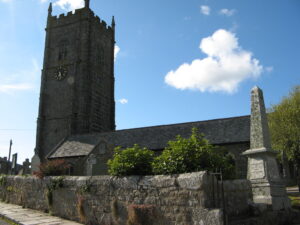
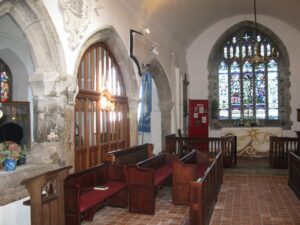


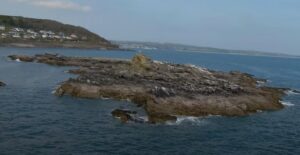
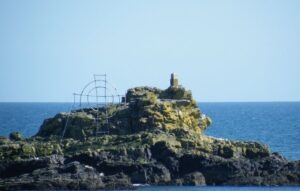
![[77] Voice - Ertach Kernow-151221A The loveliest village [S] The loveliest village - Mousehole](https://www.cornwallheritage.com/wp-content/uploads/2021/12/77-Voice-Ertach-Kernow-151221A-The-lovliest-village-S-229x300.jpg)
![[77] Voice - Ertach Kernow-151221B The loveliest village [S] Ertach Kernow - The loveliest village](https://www.cornwallheritage.com/wp-content/uploads/2021/12/77-Voice-Ertach-Kernow-151221B-The-lovliest-village-S-226x300.jpg)
